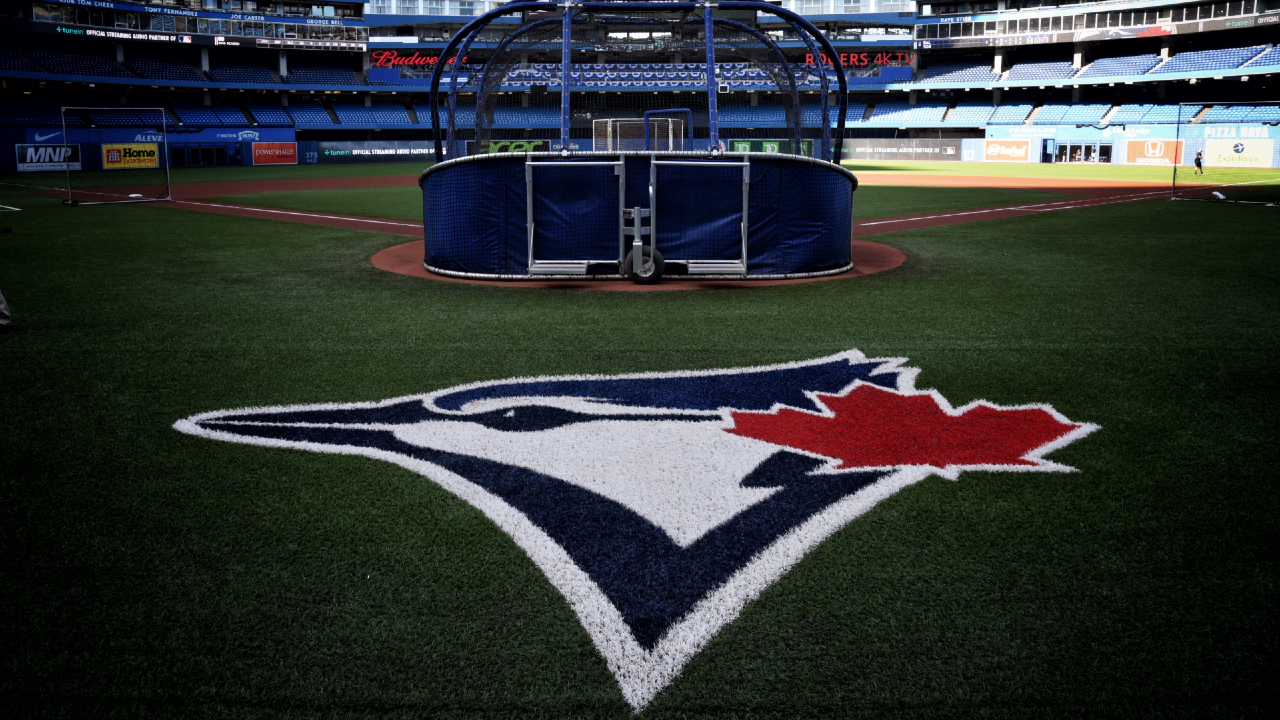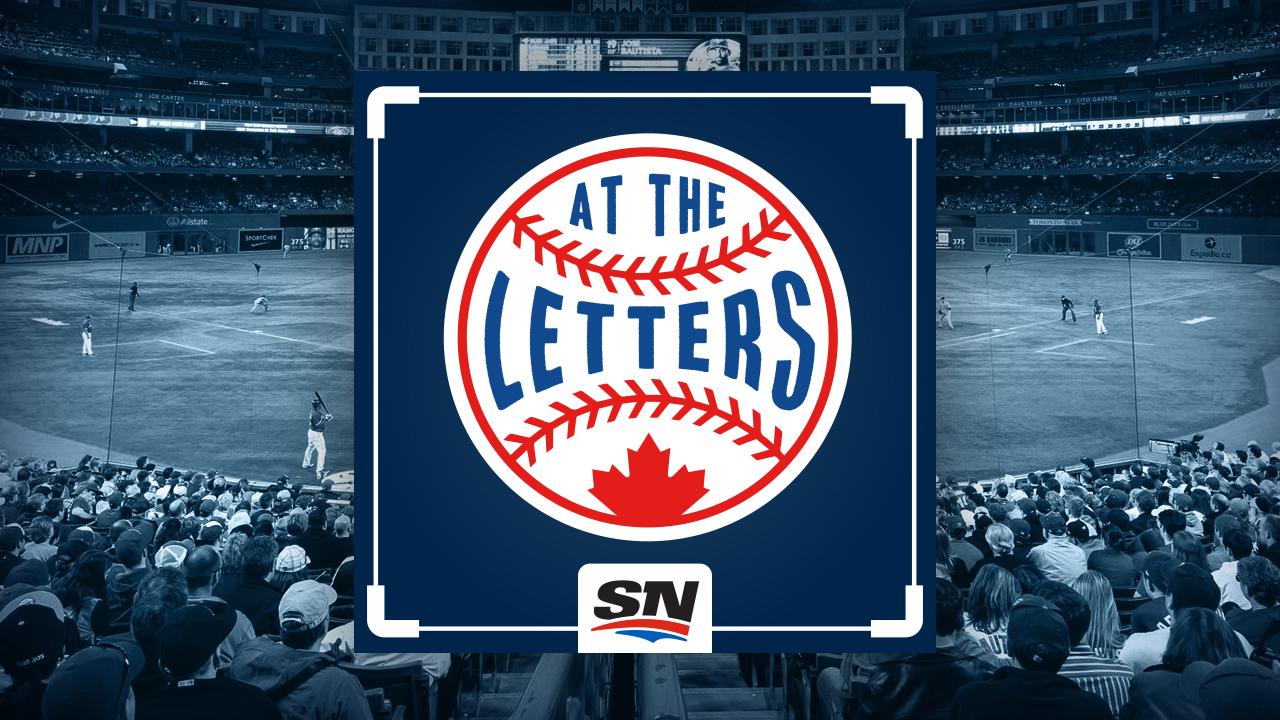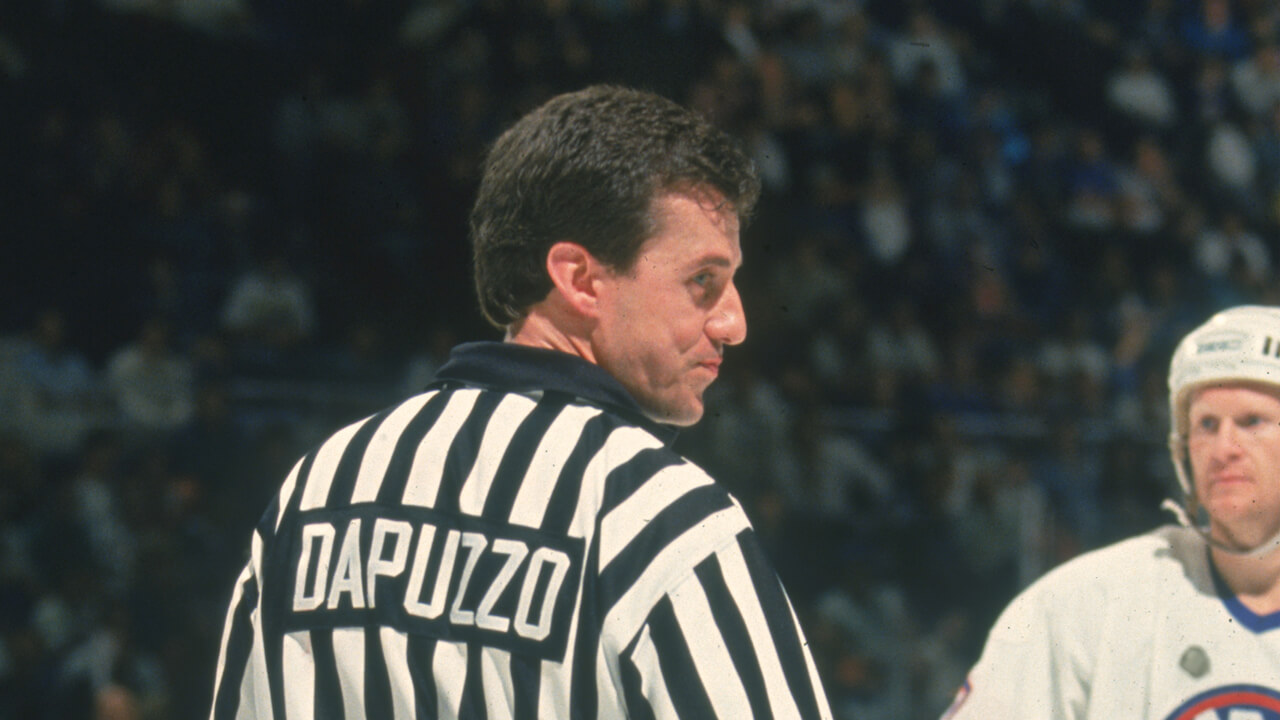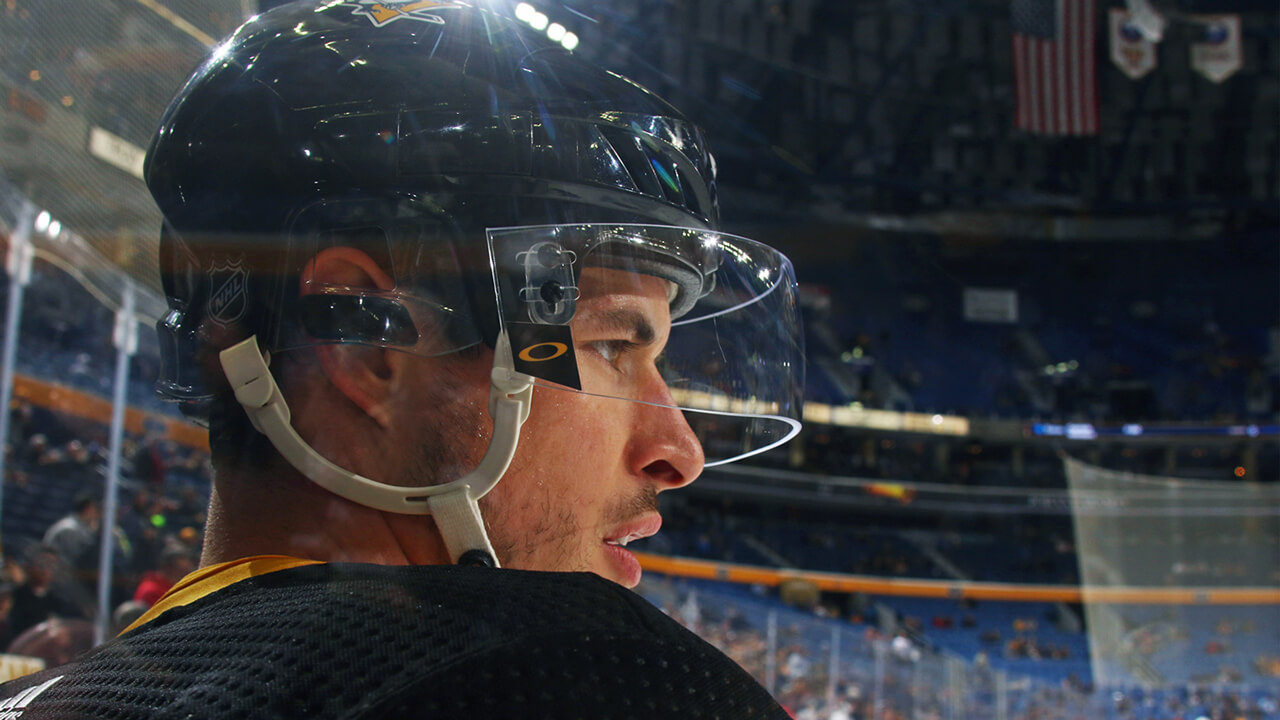Y ou can’t really blame John McDonald’s father for assuming his son was miserable. A slick-fielding infielder in the Cleveland Indians organization, McDonald got his first taste of the big leagues in 1999. But during that season and over the following two years, he just couldn’t stick with the club and was shuttled back and forth between the minors and majors.
On the occasions McDonald found himself with the Indians, he was mostly confined to the bench. Not because he lacked talent or work ethic, but because of the names ahead of his on the depth chart.
“I didn’t play a whole lot and I remember my dad being slightly frustrated,” McDonald recalls. “I think he felt like, I was just used to playing all the time. And now that I wasn’t, he didn’t think I was enjoying myself.
“But it was a blast,” he continues. “I was a kid in a candy store.”
McDonald was blocked in the middle infield by Roberto Alomar at second base and Omar Vizquel at shortstop. But he prefers not to use such terminology. Instead, McDonald views his time behind the duo as a free education, with the infield serving as an outdoor classroom during batting practice each day. “I knew I was watching the two best middle infielders in the world,” he says. “There’s just no better thing for a defensive-minded middle infielder than to go to work every day with Robbie and Omar.”
Cleveland had signed Alomar in December 1998 to play alongside Vizquel. The move was like uniting De Niro and Pacino. Entering their first campaign together, the two men owned a combined 13 Gold Gloves. Over the next three seasons, they would haul in six more. Together, they exhibited a level of defensive creativity and flair around the keystone that had likely never been witnessed before and has not been seen since. Together, they created a legacy as perhaps the greatest double-play combination in the history of the game.
This is their story in the words of those who witnessed it firsthand — learning everything they could from the middle-infield masterclass or simply taking in the magic with awe and appreciation.
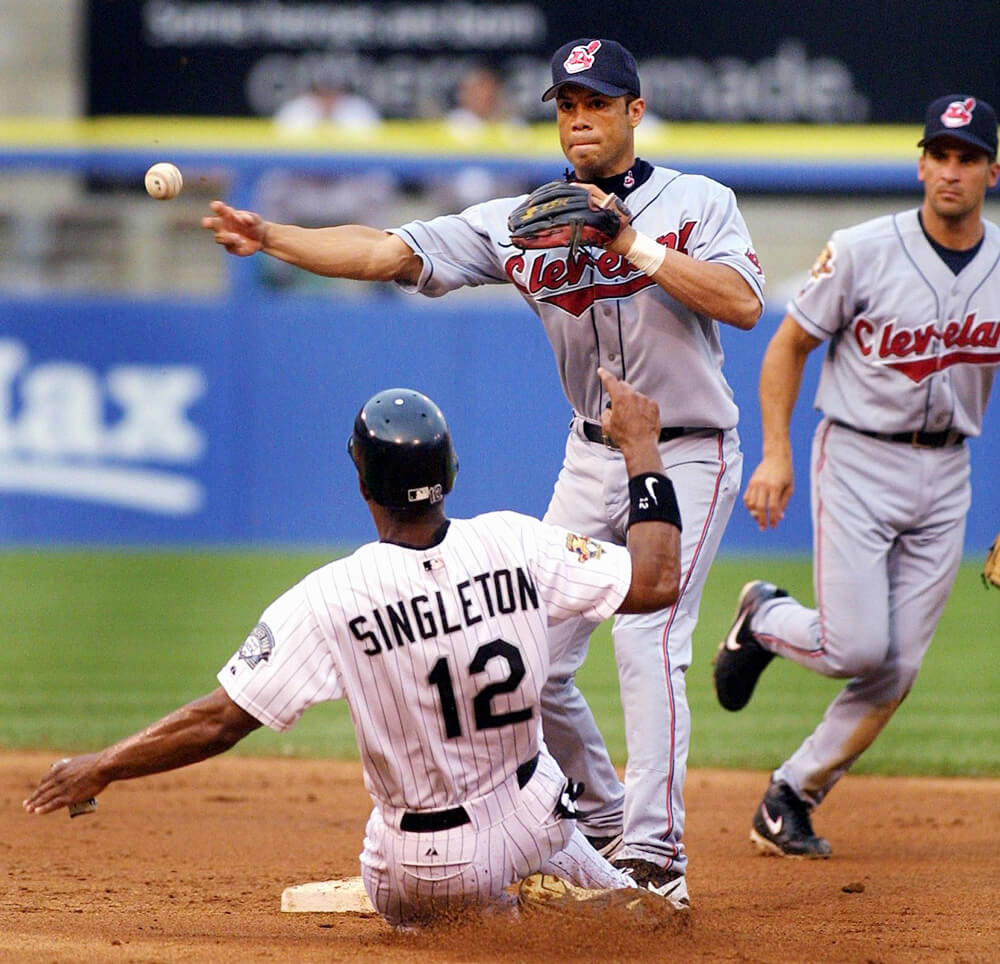
Roberto Alomar, 2B The funny thing is that I wanted to sign with the Indians before I signed with Baltimore [in December 1995]. They approached me when I was in the free-agent market and it couldn’t happen, so I went to Baltimore.
Mike Hargrove, Manager Acquiring Robbie was something that [general manager] John Hart had worked on for a long time, and he was able finally to pull it off. We felt like Robbie coming over as a player on his own was a tremendous boost to our ball club. And that him and Omar would be a tandem up the middle just added to it.
Paul Hoynes, Cleveland Plain Dealer You couldn’t wait to see them. Obviously, I had seen Omar through his whole run with the Indians and I’d seen Robbie with Baltimore and Toronto. But I hadn’t seen him every day. It was just an anticipation of, “what are these guys going to do?”
Mark Shapiro, VP of baseball operations, assistant GM Bringing together two of the preeminent defenders and players in the league in one double-play combination was something that we were incredibly excited to watch. Omar was almost like watching a dancer or an acrobat play the position and Robbie was like watching someone who, regardless of whether he was playing tennis, basketball or any other sport, would be one of the best athletes you would ever find on any field, in any court, in any arena.
Charles Nagy, SP We thought [Alomar] was the piece we needed to get over the top. Because we had been to the World Series a couple times and just didn’t win. So, we were excited to have him. Now we had one of the strongest teams probably in the history of the game up the middle, with those two and Kenny [Lofton] out in centre and Sandy [Alomar Jr.] behind the plate.
Alomar When I signed with Cleveland, first of all, I wasn’t even thinking about Omar Vizquel. I was thinking about how happy I was that I was going to play with my brother. But I knew that I was going to play with Omar, and as soon as I got there, one of the topics was how fun it can be to have these two guys play baseball beside each other. Watching Omar from the other side, you appreciate the flair, the way he played, the fun he always had in the game. But I wanted to see how it was to play with him on an everyday basis.
Omar Vizquel, SS I was very excited to have the chance to play with a [future] Hall-of-Fame second baseman. The fact that he got a couple World Series wins, seeing it from the other side, it’s like, “Wow, this guy is amazing. He’s one of the best second baseman to have played the game.” I [was coming off] some good years and had a few Gold Gloves. Having him next to me was going to be just an amazing combination.
McDonald That was the one thing in spring training I was most excited about: I wasn’t somebody who was going there to make a team, but I wanted to go in and mind my own business and hopefully be on the same field as these guys.
Hoynes When I was working for The Plain Dealer, we were trying to do a photoshoot to get both of them together. We finally got them both on the back field, sitting on second base, looking into the camera — our photographer worked all this time to do it. And she gets the shot, and I look behind her and there’s, like, 40 other photographers. They’re all waiting for the same thing. They were all shooting over her shoulder.
Hargrove I was amazed how quickly they got into sync. Usually you bring in two new guys, no matter how good they are, it takes a while for them to sync up. With Robbie and Omar, it didn’t take them long. They came to the point where it was like they knew the other’s thoughts and knew where they would be in relation to executing the double play. It usually takes more than a couple weeks.
Vizquel We didn’t really need to talk too much. The only question was, ‘Where do you like the ball the most, so I can make your job easier?’ He told me that he liked it on the right side of the base, or right around the base, and that was it. From there on, it just clicked, like we were playing together for 10 years.
Alomar I remember he used to tell me, ‘Just throw the ball around the bag. I’ll get there.’ So, for me, it was easier playing with Omar. Because I wasn’t worried about throwing the ball to his right or to his left. He would just say, ‘Make sure you throw the ball in the air, and I will get there and I will turn it.’
Vizquel We made some unbelievable double plays in spring training and people were already talking about the combination.
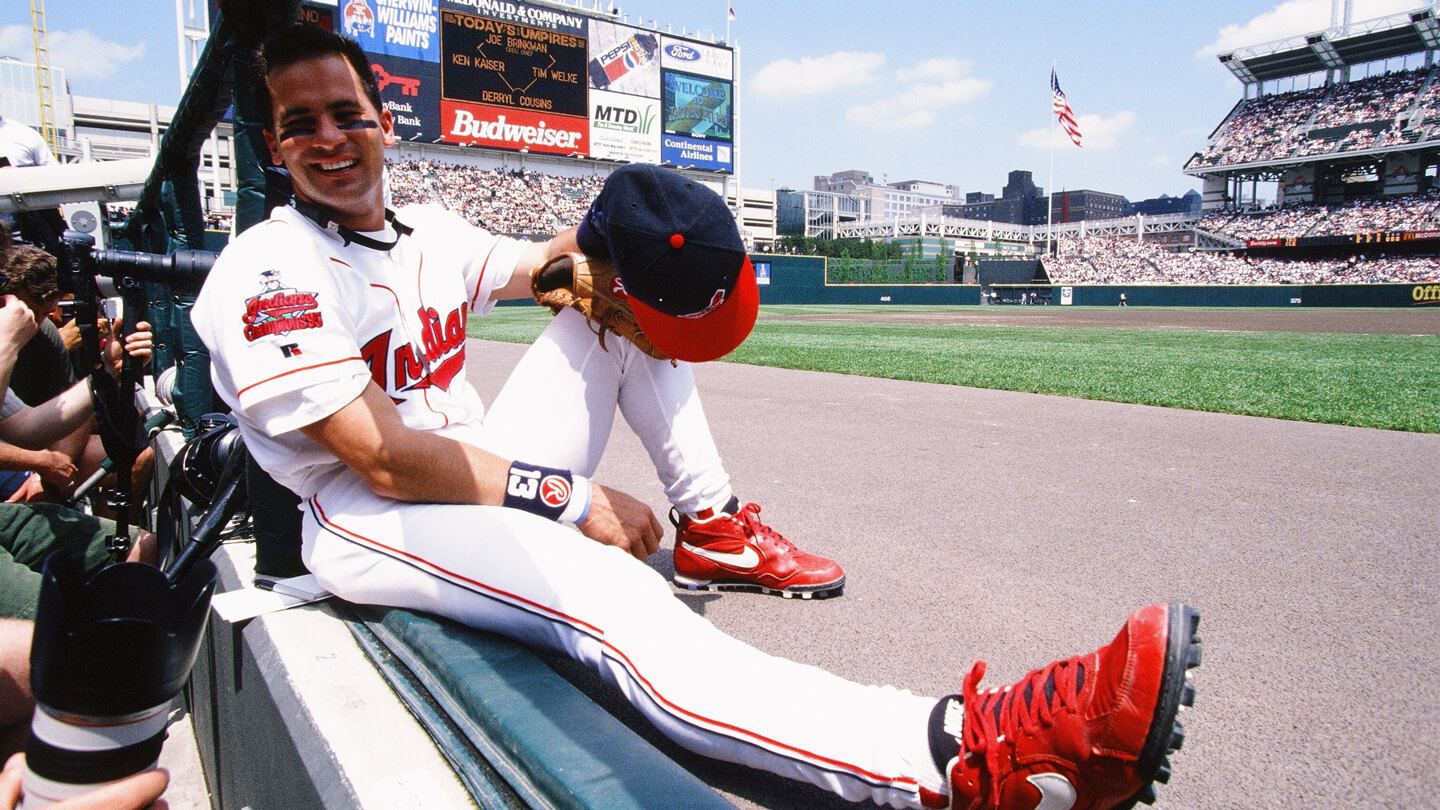
H arold Reynolds was a young second baseman with the Seattle Mariners when he first heard stories about a kid from Caracas, Venezuela, who had the “best hands” many in the organization had ever seen. Vizquel signed with Mariners as an amateur free agent at age 16 and when he was introduced to his future teammates, he didn’t disappoint.
“Omar as a teenager … was ridiculous,” says Reynolds, who won three Gold Gloves during his playing days and currently works as an analyst for MLB Network. “Fundamentally, he was really sound. He was always in the right position. His hands were just smooth and fluid. He never had a bad hop. He created the hops. He knew exactly how to read and attack ground balls. He was a technician, but he was so smooth it got overlooked.
“You break him down and he’s got his feet in the right position, the hands, the head, everything. He was just flawless.”
Reynolds has been close with Ozzie Smith ever since his older brother, Don, roomed with the Hall-of-Fame shortstop. When he first laid eyes on Vizquel, Reynolds was so impressed that he called Smith just to gush. Smith couldn’t believe he was receiving a phone call to hear about a teenager, but, Reynolds says he understood years later when he got a chance to see Vizquel himself.
Once Vizquel was called up to the Mariners in 1989, Reynolds showed his new double-play partner a video clip of Smith in action. “I go, ‘This is the goal, man. This is the guy you want to be. You want to win as many Gold Gloves as he has.’ [Omar] was like, ‘He’s pretty good.’ I was like ‘Yeah. He’s the gold standard.’ But I think Omar became that standard.”
Reynolds met a teenaged Alomar when the two were playing winter ball in Puerto Rico. He noticed a player who was silky defensively, with “ridiculous” range and a rocket arm. Like Vizquel, Alomar’s glove was well ahead of its years. “He was one of those where you go, ‘Who is that?’” says Reynolds. “He was a separator at age 18. You knew he was going to be a superstar player.”
Years later, when Reynolds visited Toronto with the Mariners, he would tease Alomar. “I used to call him ‘hero’ all the time,” he says. “Because he was one of these guys where you look at him and go, ‘I want to do that.’ Like you do with your heroes.”
Reynolds was among the many in baseball who were hankering to watch Vizquel and Alomar together during the 1999 season.
Reynolds I was broadcasting at ESPN and when I’d go watch the Indians at that time, I went early just to watch them take ground balls in BP. If you were an infielder and you got a chance to watch Omar and Robbie, at any time in their careers, take groundballs, you stopped and noticed. It was just a thing of beauty.
Hargrove I’m trying to not be too flowery with my description, but if you filmed one of their sessions when they really were working together, and if you put music to it, it would have been a really interesting and beautiful thing. They were just so athletic and so fluid.
Reynolds You could almost compare it to dance. You’re seeing the best dance routine you’ve ever seen. The reaction when Michael Jackson did the moonwalk and everybody was like, “I’ve never seen that before” — that was Vizquel and Alomar taking ground balls. Anything you ever wanted to see done, you name it, it was a thing of beauty.
Vizquel It was like a dance, man. Like when you dance together at the same rhythm, the same movement. The ball looked like it bounced off the wall, because you already know him from head to toe. When I’m coming forward, when I’m going in the hole, when I’m going to my right or my left, where he liked the ball and how to make it easier for him to turn the double play — it just became like a dance.
Alomar We were in tune, like music. I remember a company came to us and we did a ballet commercial. We were jumping in the air and throwing the ball and doing ballet stuff. It was funny. The way we played the game was more like dance. We can flow.
Vizquel You know, we didn’t really work together that much. I think Robbie was the kind of guy that liked to take his ground balls early. Take a lot of early work and then sometimes he would turn double plays with another guy. And then when it was my time to take ground balls, I turned double plays with a different guy. I was just picturing him being on the base, so I was able to give him the throw. Very few times we took double plays together, where we really turned during batting practice.
Alomar We did our work during spring training, so during the season, yeah, we only needed a few throws here and there.
McDonald Omar would feed second every day. He didn’t throw a ton of balls to first, but he fed second every day. So, I would stand at second and I would watch his exchange, watch his footwork. I’d have a good seven or eight minutes just standing there and catching balls from Omar. It was ideal. When Omar was done, I would just turn around and look at Robbie and he’d be ready to go and he would start feeding me balls at second base. I’m not taking any ground balls, but I get to watch footwork, watch Robbie’s feeds — that sidearm flip, his creativity with his glove, how he would step to the ball with his feet. They were both really efficient, so I was enamoured with their efficiency and quickness and their strive for perfection.
Travis Fryman, 3B Johnny’s watching Omar up close and asking questions. And watching Robbie up close and talking to Robbie about why he did this or why he makes this play this particular way; why he positioned himself that way. Every day is a classroom when you play with guys like that if you’re someone who wants to learn and someone who wants to get better.
Vizquel John was the kind of guy that liked to take 100 ground balls a day. Obviously, he had a hard time playing with the Cleveland Indians — we had a pretty filled-up lineup and sometimes he didn’t get a chance to play much. But John was a magician, man. It’s too bad that he didn’t get to play as much. His hands were as good as a lot of great shortstops and he showed it when he had his opportunity to play.
McDonald When they were done, and I had about 15 minutes with no other infielders in the infield, where I got to throw balls and I got to turn my own. I got to feed second and there was another coach who would come in. I would basically watch them for 15 minutes and then go apply it right away. What can I do differently and how can I do it better? I was hell bent on being quicker. I’m like, ‘OK they don’t bobble the ball, they don’t miss, their footwork is always perfect, mine is not. So, get better at that.’ I just started working faster and faster. There’s not a whole lot I can do better than them, but I can work on being faster.
Fryman Omar used to have little things that he would do. Like after he caught the ball, he would hold his hands together around his chest and pump them a couple of times before he would separate to throw. What he was doing was making sure he had a four-seam grip before he exchanged out of the glove. John McDonald didn’t have a strong arm, so John was always trying to see how quick he could be. Get rid of the ball quick. Had some trouble with accuracy with some of his throwing and Omar taught him not to separate out of his glove until you had a four-seam grip. That really helped John McDonald a lot.
McDonald Omar didn’t talk about this. I just watched him do it over and over and over. I watched him in games do it over and over and said, ‘OK I’m going to start practising that.’
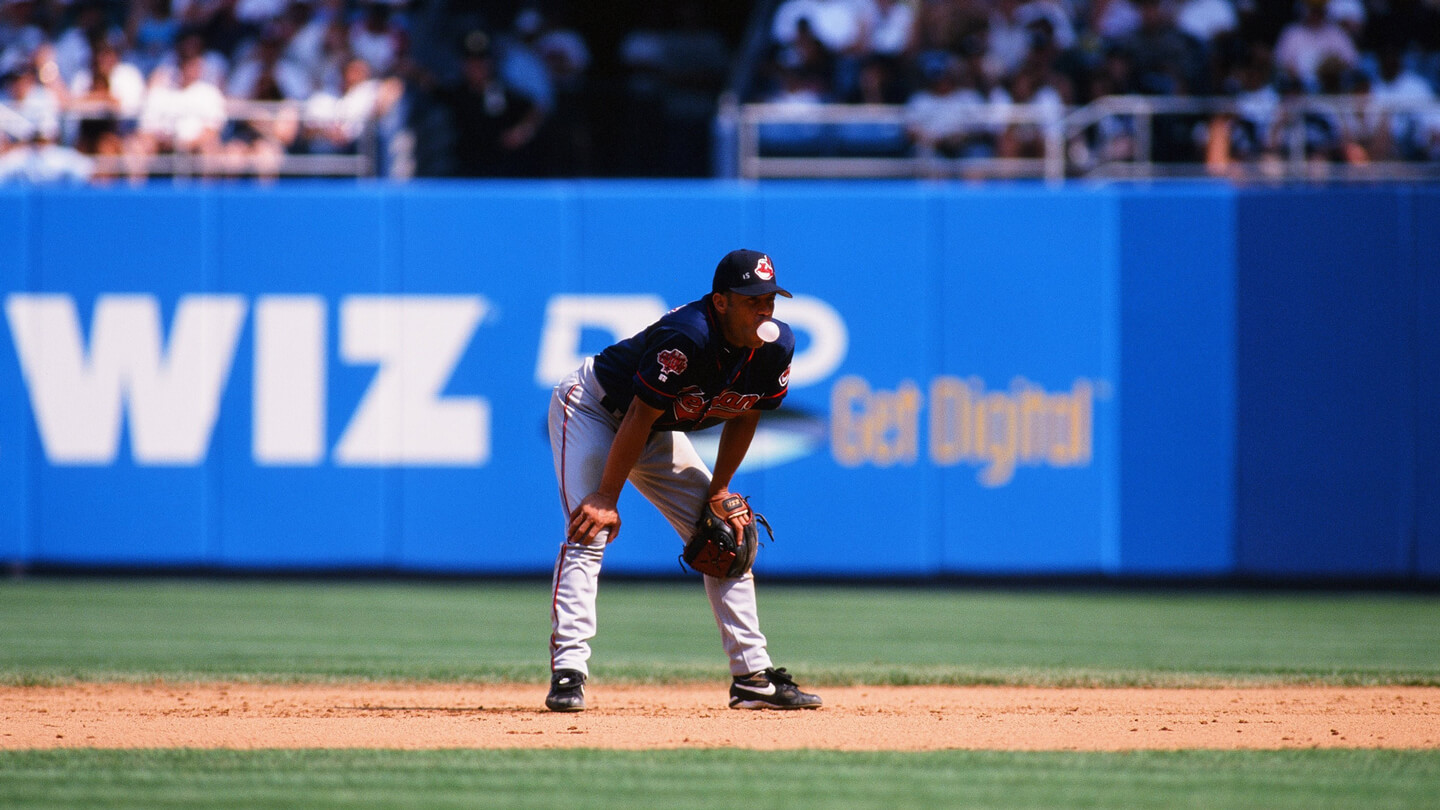
I f you weren’t among the lucky few who got to watch the tandem live on a daily basis, you could often find them on the nightly highlight shows. That’s where Ozzie Smith, who retired following the 1996 season, mostly observed the web gems created by Alomar and Vizquel. The Hall of Famer wasn’t alone in noticing that Cleveland’s dynamic duo operated with a healthy dose of flair.
“Sometimes you’re just born with that and that’s one of the skill sets that they were born with,” says Smith, the 13-time Gold Glove-winner. “Not that they tried to dress any plays up. It was just the way that they played and the way that they played together. They played off each other and I think they made each other look good.”
Smith One of the things that they probably did a lot more than I did was taking the ball and flipping it out of the glove. I always thought that was a very unique skill set, if you’re good and consistent at it. Most guys aren’t but those two guys were very consistent. It made it fun to watch. Like poetry in motion. Because they both were able to cover so much ground, it was like a sweet science. It really was.
Alomar When you have a guy beside you that is so talented, you just go with the flow. I knew what kind of player Omar was over there, so I was really comfortable throwing the ball quick or flipping the ball with the glove. I was really comfortable doing whatever I wanted to at second base because I knew he was going to be there.
Vizquel In BP, sometimes you practise some of those flips behind your back or flipping it with the glove and stuff. But a lot of those plays came in the moment, out of the improvisation of just having the ability to field the ball wherever you want and make the throw wherever you want.
Smith That was it. That’s what made them great. Their ability to improvise. Because you never know where or how a double play is going to be turned. That really depended on where the runner was. When the double play is in order, it could be something different every time, so improvisational skills and the consistency, that’s what kind of set those guys apart.
Alomar The key to success for me, and I bet you for Omar, too, and for Ozzie and all those guys who were great defensive players, is that they used to enjoy playing defence. Because you can work and you can do this and do that, but imagine you go to a place and you don’t enjoy defence? I enjoy hitting too, don’t get me wrong, but to me, I enjoy making a play and seeing the other guy get upset. “Wow, how did you make that play?” That’s what I took a lot of pride in.
Hoynes When they were on the field, they brought the best out of each other. It was almost like they were challenging each other. I’ve never seen anything like it.
Shapiro I don’t know if they challenged each other, but they definitely fed off each other. Both incredibly intelligent. Both knew the game and understood the game at a level that other people didn’t.
McDonald I felt like they always had something to prove to each other and other people that were watching. It was almost like, “You are really good. I am really good. I’m going to make plays.” And they would raise their games together.
Fryman There’s a little ego in every good player. The other guy, you want to one-up him. Or want to play a little better than him. And I think with Omar and Robbie, there was an unspoken little thing there: See who could outdo the other one and it elevated both of their games defensively.
Vizquel When you have a guy that is that good next to you, you don’t want to be in the shadows of anybody. You want to be as good as the one that you have. Or even better. If you make a great play up the middle, you just want to make another play that can bring the fans up to their feet. It was like a competition of fineness. He just raised your level so high, man. You had to be on your game every day.
Ben Nicholson-Smith and Arden Zwelling host the most in-depth Blue Jays podcast in the league, covering off all the latest news with opinion, analysis and interviews.
Alomar We both wanted to come to the ballpark to make something happen. We knew that people’s eyes were on us all the time. For me, it was more of a fun thing. I used to enjoy when he made a great play. But it didn’t surprise me, because I knew that something different was going to happen. To me, I don’t know if it’s a challenge. I didn’t look at it that way. It’s always nice to see somebody do great beside you and you can follow with another great one. Maybe something like that. I was more enjoying him on an everyday basis.
Shapiro I have visions of Robbie literally laying out into the outfield, getting the ball to Omar, Omar being airborne seemingly endlessly, making his transfer and throwing the ball to first base. There were so many plays where the exchange, the flip, was unconventional, was athletic, was creative and you just wouldn’t see it with any other guys.
Hoynes Robbie would do that sidearm shovel throw to Omar at second base and I had never really seen a guy do that. Or if a guy did that, he was like five feet from him. But Robbie’s doing it 20 or 25 feet from second base.
Nagy I benefited the most from them. I was a sinkerball pitcher. So, I wanted everybody to hit the ball on the ground. Between their range and their sure-handedness and their strong arms, any ball that was going anywhere between third and first base, they were going to get to and they were going to make the play.
Alomar There were so many [standout plays]. I remember one that didn’t look flashy, but it’s really kind of a difficult one. Somebody hit the ball to me really hard and I caught it. And the same way I caught it, I flipped it in the air, almost without looking, to second base. And I didn’t know if Omar was going to be there. And Omar grabbed the ball, barehanded — it was a little low throw. He grabbed it, jumped and threw the ball. That double play was really difficult and he made it look really easy. We did so many that I wish they had a tape of it or something.
Vizquel One of my favourite double plays that I turned with him was in spring training. It wasn’t even during the season. I turned a lot of double plays with Robbie, but there was a play in spring training when he was going to his right, and he gave me a flip without looking at me and it was a little off the base, it was on the dirt, like a one hop throw, and I barehanded the ball and I switched my feet to make the throw to first base, and the people went crazy. That was a pretty cool double play. Even in spring training, when you don’t get to be that excited, people stood up and they were giving us a standing ovation.
Hoynes They pulled a double play off in Yankee Stadium, and I can’t give you a date, but every extraordinary thing that goes into a double play, they did it in one play. Robbie makes a backhand diving stop near the bag. Flips it out of his glove. There’s a guy coming, bearing down on Omar. Omar leaps over that guy, takes it in his bare hand, and makes a throw to first base and gets a double play. It was like perfection at all points. And you saw that kind of stuff all the time.
Alomar We were in New York. Bases loaded, I dove near second base, I flipped it to him with my [glove], he grabbed it, barehanded, he jumped and he threw it in the air and we turned a double play and everybody was like, “Wow.”
Hoynes I was stunned. I don’t know what anybody else did but I was sitting there thinking, “That’s the best double play I’ve ever seen.” And to this day it is. It had everything. There was the flair, there was nothing fundamental about it. You didn’t hear the gears grinding. It was just like music. It was beautiful.
P erhaps no one in baseball has a better understanding of the personalities of both men than Carlos Baerga. He roomed with Alomar, a fellow Puerto Rican, during their time in the San Diego Padres organization and distinctly remembers when they would return home following a long workday: “Robbie, at night, when we got back from spring training, would lift a little bit,” Baerga says. “Then, he would wake up [the next morning] and start doing pushups and exercises, while I was watching TV. That was Robbie right there.” In retirement, the two have travelled the world together working with children in baseball clinics.
Baerga also spent three years as Vizquel’s double-play partner in Cleveland and they remain close friends. He laughs to himself when he recalls the loud, flashy shirts that Vizquel would show up to Jacobs Field wearing.
Fryman Omar is very artistic. Sort of an eclectic-type guy. Colourful. Loud clothes. Smiling and always trying to learn new things. Omar was a love-life kind of guy.
McDonald Omar had a canary yellow Porsche.
Hargrove I remember John Hart telling me that they got calls every now and then from the state patrol or local police force to please ask Omar to slow down coming to the ballpark.
Baerga Omar was a different guy. Omar got so many talents. He liked to paint. He liked to play the drums, he’s a musician. Omar could be a stand-up comedian. Omar could be a guy who could do anything he liked.
McDonald I went over to Omar’s house one time and he’s painting a picture in his living room. They just had different interests. I went over to Robbie’s house and we’re in the driveway playing one-on-one basketball.
Alomar I kicked his butt. [Laughs.]
Baerga Robbie was so competitive. Oh my God. He’s always been like that. Everything he does, he wants to win. He wants to be the best. That’s something they don’t teach you. He didn’t want to be a loser.
McDonald He was not going to let me win. He was going to knock me down before he would let me win in basketball. I’m thinking to myself, “I like playing basketball and I don’t like to lose, but if I start playing the way Robbie’s playing right now and I hurt him for some reason, two things: I’m probably in the lineup that night, and I’m probably getting released after the game.”
Baerga Robbie was a very serious guy. Robbie was like the manager on the bench. He was always looking for something from the pitcher — to take advantage. Something from the other team’s hitters, the baserunners. He was always paying attention to everything. He let everybody know, “Hey, be ready for this, the pitcher is doing this.” He wanted everybody to be better, and that’s something that not too many people have.
McDonald He would talk about all the little edges he could get as a player on defence: Positioning, knowing the runner’s speeds, being able to move back, reading swings. I enjoyed that with Robbie.
Vizquel What separated him from the rest of the guys was how smart he was. And all the knowledge that he had with the game, he would tell the other teammates some of the things that benefited the team. Obviously having that guy there, it was like another manager on the field.
Hargrove Omar was more of an outgoing, free spirit than Robbie was. Robbie was more subdued, I guess. He didn’t have the big, outward, in-your-face kind of personality that Omar did. But they mixed well.
Alomar I played with so many shortstops. In the beginning, my two guides were Garry Templeton and Dickie Thon. Then I played with Cal Ripken, it was amazing. Tony Fernandez. Mike Bordick. But playing with Omar was really special because his mentality for the game was more fun. Fun, but at the same time respecting the game. He had a personality. He has his own personality, where he was always smiling and having fun — same way I was. Even though I was a little more serious in the game, I loved the game of baseball.
Fryman I didn’t know how to enjoy myself playing baseball. Early in my career, I was a very serious player. It was a very difficult game. I came to Cleveland and playing with Omar, playing with Robbie and several of those guys, I learned how to have a little more fun on the field. That it was okay to smile and enjoy yourself a little bit. That certainly contributed to me having a couple of my best years in Cleveland. Nobody I ever played with had more fun on a baseball field than Omar Vizquel.
Baerga Like when you’re playing with your friends outside in your backyard. That’s the way Omar was.
McDonald I was pretty serious when I played most of the time, but it’s hard to not smile and have fun when you’re on the field with Omar. I know he brought out a different enjoyment of defence, like, “It’s okay to be happy and smile and try to be out there taking hits away from guys.”
Alomar I wish I would have played more years [with him]. It was amazing.
Vizquel The only bad thing was that he only was there for three years. That we didn’t really play that long together. People think that we played longer together, just because of all the plays and everything that we accomplished on the field. But that wasn’t really the case.

L ook back at the baseball cards or any of the iconic photographs of Alomar and Vizquel and you’ll likely see them airborne, jumping over runners who were barrelling into second base. The ability to evade slides was a survival skill that every middle infielder needed to possess, as Vizquel learned in the spring training of 1990, when Baerga, then playing with Cleveland, injured the Mariners shortstop’s knee with a hard slide.
Vizquel missed three months that season due to the injury, and it was a turning point in his career, says Reynolds. After that, Vizquel grew tougher and learned to be a gymnast around the bag — just like Smith before him. The two men now sit atop the all-time list of double plays turned by a shortstop, with Smith’s 1,590 trailing Vizquel’s 1,734.
In today’s game, the ‘Chase Utley rule’ has made that specific skill obsolete, according to Reynolds. “We changed the athlete now,” says the MLB Network analyst. “If you were going to play in the middle infield, until they changed the rule, you had to be nimble. You had to be an athlete that’s going to be able to catch a ball, turn it, pivot, know that you might get hit getting over somebody — that’s all gone now.”
That’s one reason why we’ll likely never see another double-play combination like Alomar and Vizquel. And when it comes to their standing in history, Reynolds doesn’t mince words.
Reynolds There’s nobody better. I can’t imagine in my mind, in the history of baseball, at least on the defensive side. Not going to throw the offence-defence [into it]. Just defensively, there’s nobody in the history of the game that was paired up that was better than them. I’m sorry, you can go back to whoever. Bring it forward. There’s no way. Ozzie Smith and Tommy Herr? I don’t know. There was no combination. Me and Omar? Cal Ripken and Alomar? Nobody on the defensive side was better than Vizquel and Alomar.
Smith They are probably one of the best double-play combinations that the game has ever seen.
Fryman I think Alan Trammell and Lou Whitaker are the greatest double-play combination in history. They were teammates for 19 years. [Fryman played with Trammell and Whitaker from 1990 to 1995, and with Alomar and Vizquel from 1999 to 2001.]
Reynolds No way. No way. [Trammell and Whitaker] were great, they knew each other real well, and they didn’t make mistakes. But these two can cover every ball hit in the infield and could make every play and could make the spectacular play. I would pay to go watch them play.
Fryman No. 1, who plays 19 and 20 years anyway, as individuals? [Trammell and Whitaker] did it as teammates and as a double-play combination. That’s worth a lot. They were both multiple time all-stars. Trammell is a Hall of Famer and Lou was a borderline Hall of Famer. I think, for me, if you ask me who the greatest double-play combination in history was, I’m gonna tell you it’s Trammell and Whitaker. If you ask me who was the best for a three-year period or who was the most exciting and dynamic and athletic and talented double-play combination, I’m gonna tell you Omar Vizquel and Roberto Alomar.
Hargrove I would say that with Robbie and Omar, there was more athleticism to turning the double play than Alan and Lou. But you’re arguing apples and oranges, really. There’s 10 ways to skin a cat and one is not really any better than the other. It’s just the difference in how you go about it. All four of them were absolutely tremendous. Robbie and Omar were probably a little more flashy, if that makes sense. Having only played against Alan and Lou, I didn’t see them on an everyday basis. But I would have to believe that Robbie and Omar were more creative.
Smith They all had great hands, but Alomar and Vizquel had more range than those two guys. They were as sure-handed as you can get, Trammell and Whitaker, but as far as covering ground, I don’t think there was much of a comparison.
Shapiro I obviously watched Trammell-Whitaker. I can’t think of any that was as athletic, that was as dynamic, or capable of making exceptional plays more than [Alomar and Vizquel]. I don’t know if you’d see two guys like that paired together again.

